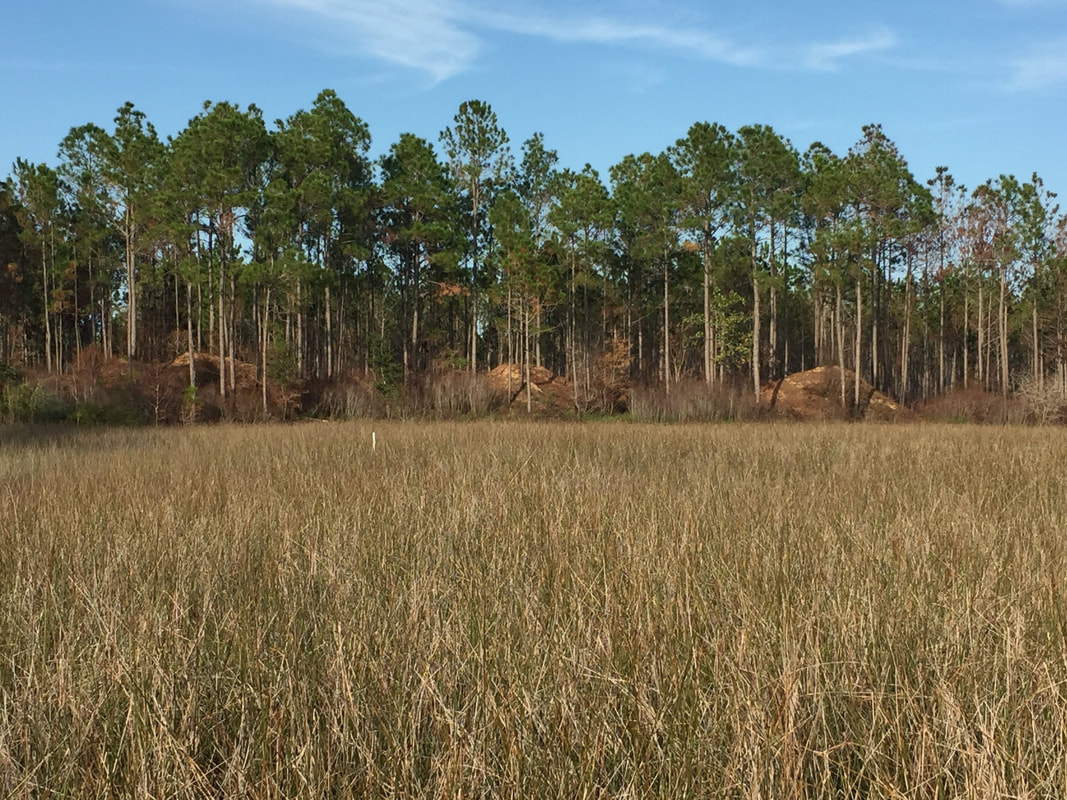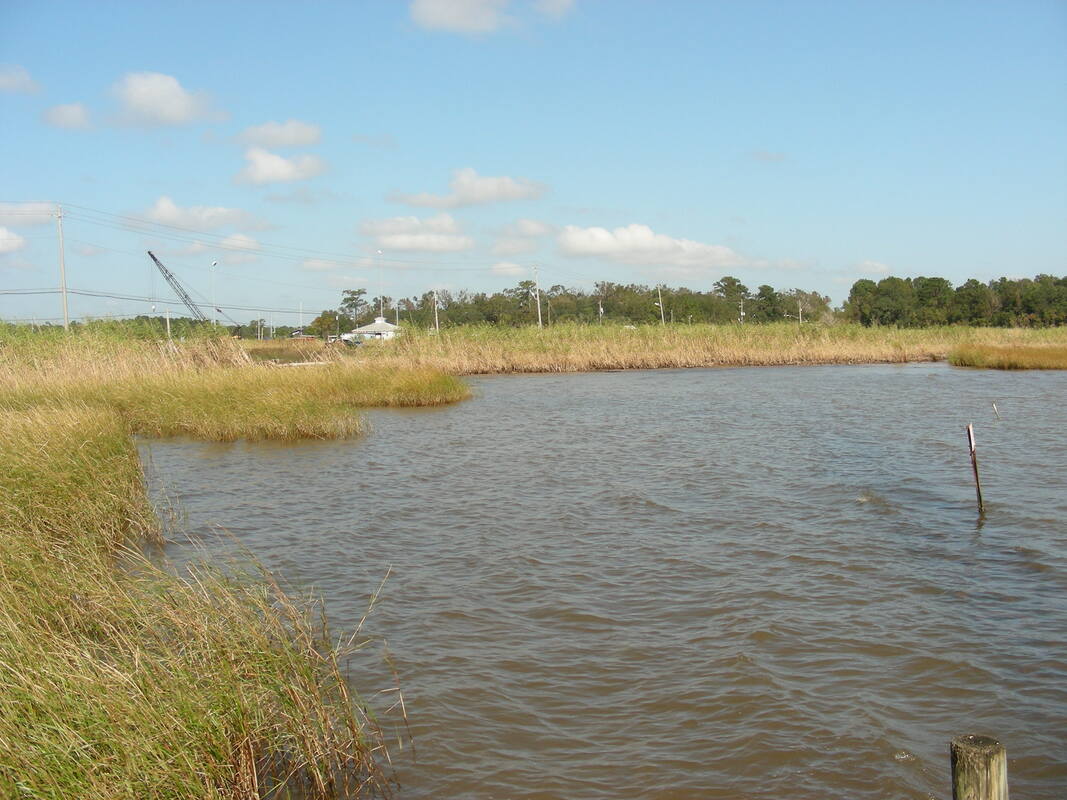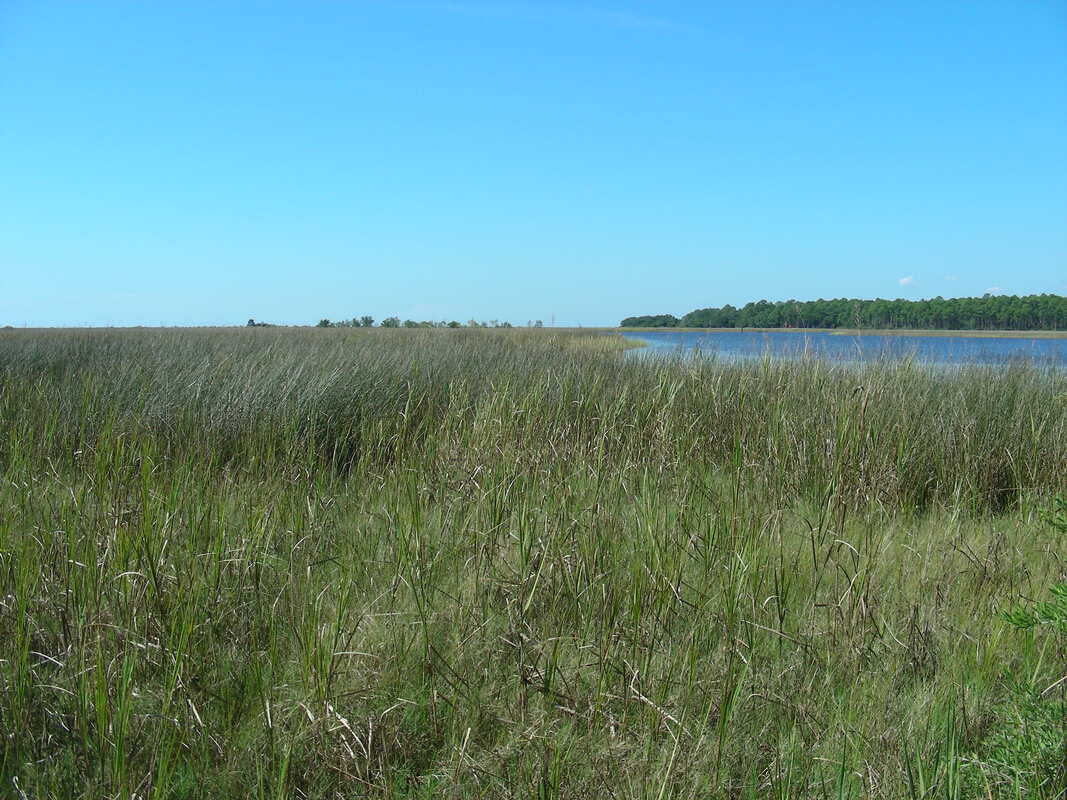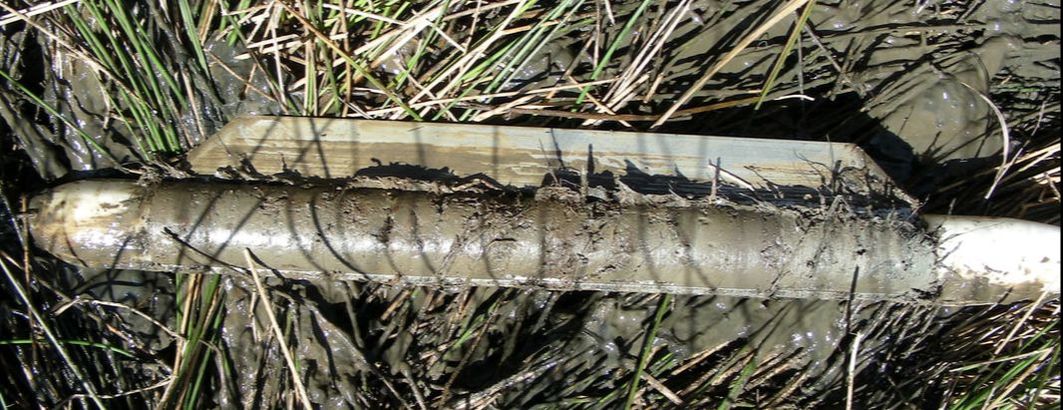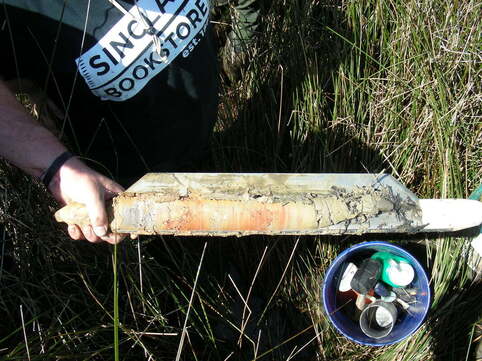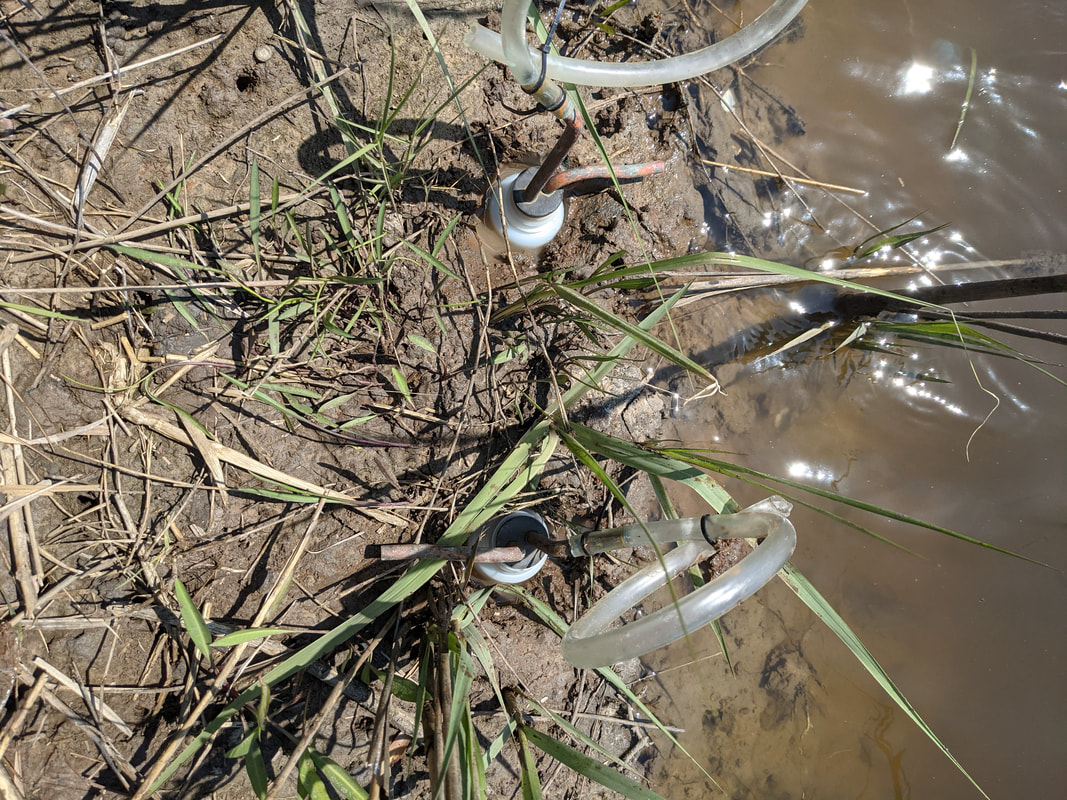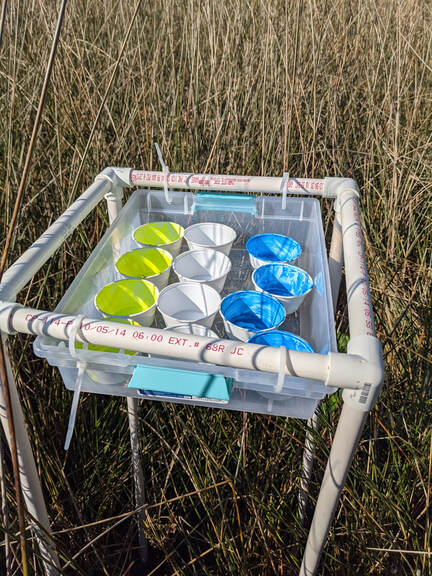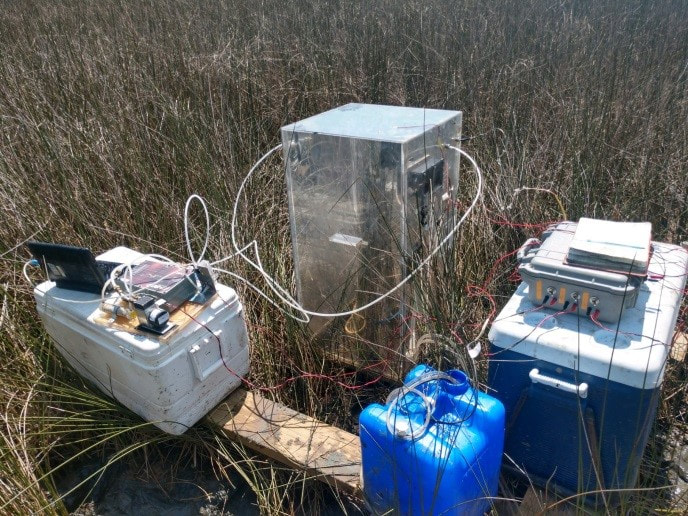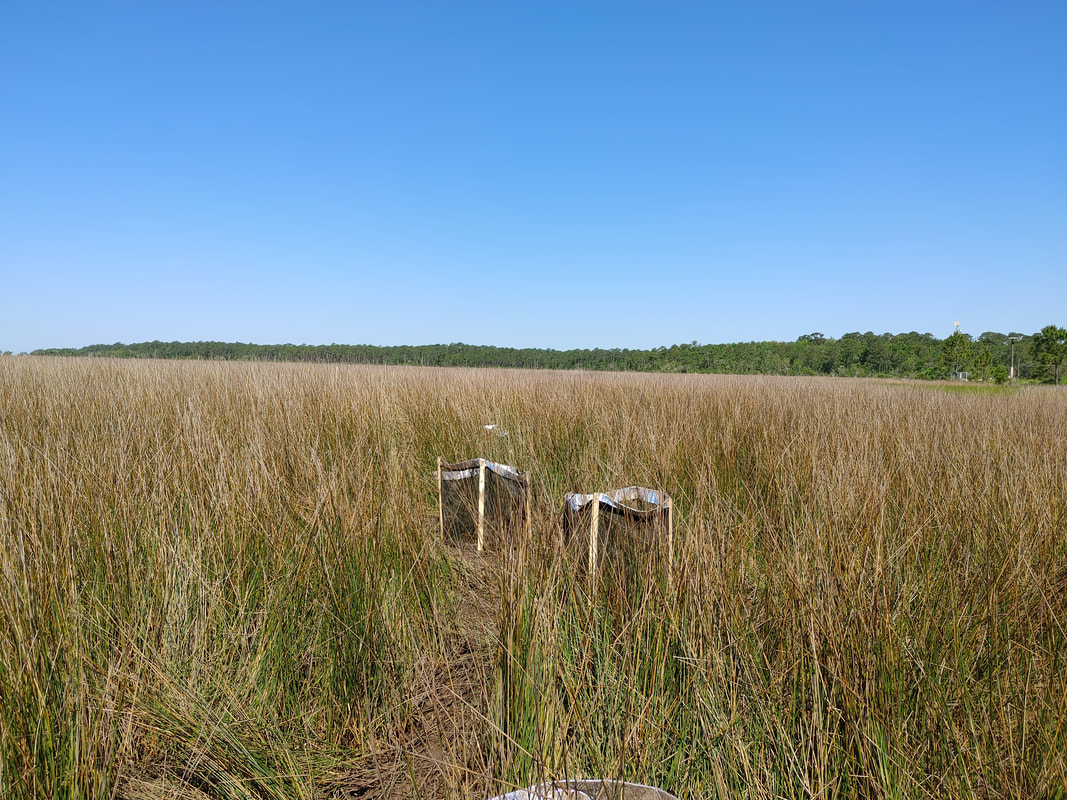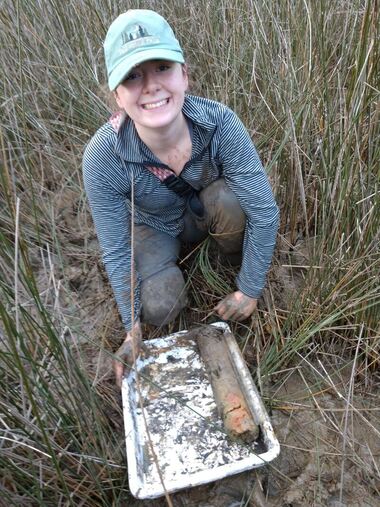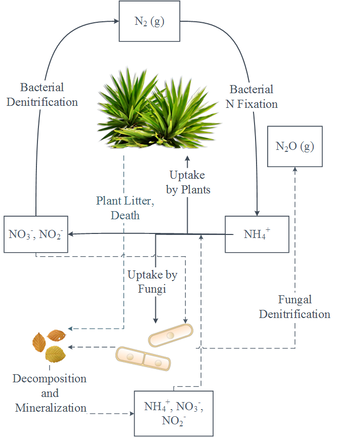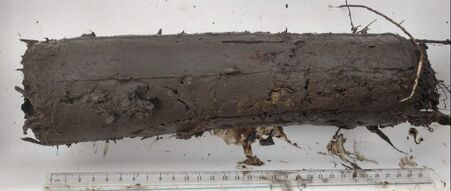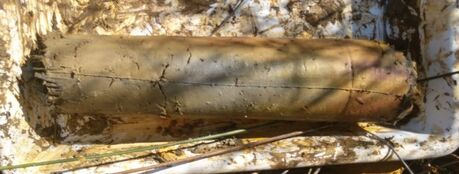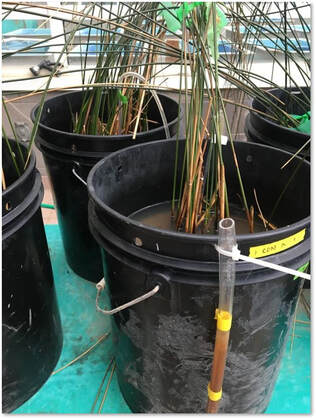|
CRIMSON Project Overview
To combat high rates of wetland loss, restoration and creation projects are necessary to recover ecosystem structure and function, as well as ecosystem services upon which humans depend. While wetland creation can achieve similar vegetation structure to natural wetlands, it often fails to fully recover similar ecosystem functions, like primary productivity, carbon sequestration, and nutrient removal. The objective of this collaborative project is to compare and contrast ecosystem structure and function in natural and restored tidal salt marshes. Starting in 2018, we began characterizing biological structure and ecosystem functions in one natural and two 30+ year-old created marshes along the Fowl River in Mobile County, AL. Based on preliminary data from these sites, we expanded our efforts to characterize structure and function to in a total of 4 natural and 12 restored sites along the northern Gulf Coast. This expanded project, entitled "Assessing Recovery of Ecosystem Structure and Function in Restored Tidal Marshes of the Mississippi-Alabama Gulf Coast," is funded by Mississippi-Alabama Sea Grant (Project Number R/HCE-15). Our primary objectives are to: 1. Compare plant community composition, plant biomass, soil carbon and nitrogen content, and nitrogen process rates in natural marshes and restored marshes of different ages; 2. Estimate recovery trajectories for ecosystem structure and functions in restored marshes and the time to equivalency with natural, reference marshes; and 3. Evaluate the relative effectiveness of different habitat restoration projects based on comparisons among restored marshes and relative to natural, reference marshes in the region. Our team is characterizing hydro-edaphic conditions, bioturbation, plant community composition, primary productivity, organic matter decomposition, nitrogen removal capacity, and carbon stocks and fluxes at some or all of our study sites. We also plan to characterize benthic invertebrate and insect communities at these sites. This work will be the first to thoroughly examine the constructed marshes of the Fowl River, and also to compare those sites to other restored wetlands in the region. Acknowledgments: We thank George H. McKean, President of North American Gulf Terminal, Inc., for permitting access to the Fowl River constructed marshes for research purposes. We thank The Nature Conservancy for access to Helen Wood Park, and the town of Magnolia Springs and C. Wise for access to their living shorelines. We also thank our partners and the Weeks Bay and Grand Bay National Estuarine Research Reserves and the Mississippi Department of Marine Resources.
|
The TeamOur team has experience in community ecology, ecosystem ecology, and biogeochemistry of tidal marshes. In addition to Drs. Cherry and Mortazavi, the group includes/included post-docs (Drs. Lorae' Simpson, Shelby Rinehart, and Corianne Tatariw), graduate students (Jacob Dybiec, Emily Fromenthal, Taylor Ledford, Erin Smyth, Sommer Starr, and Abbey Griffin Wood), and a number of undergraduate students.
|
Contact UsTo learn more about this project and opportunities in the Cherry lab, contact Julia Cherry at julia.cherry@ua.edu
|
CRIMSON Projects
|
Seasonal sediment dynamics in a natural and constructed marsh
Jacob Dybiec Jacob Dybiec, a former Ph.D. student in the Cherry lab, conducted a field study comparing short-term sediment fluxes in a natural and constructed marsh along the Fowl River. Sediment budgets of tidal wetlands can serve as a measure of overall system resiliency, particularly in the context of increased erosion and sea-level rise, by providing information about the amount of sediment entering a wetland vs. the amount leaving it, and the percentage of that sediment that is organic vs. inorganic. The goal of this study was to assess whether general short-term sediment budget characteristics were similar between a natural brackish marsh and a nearby ~30-year-old constructed brackish marsh. To accomplish this objective, Jake deployed sedimentation traps and measured edge erosion and surface scour at equal intervals along tidal creeks in both the natural and constructed marshes. Sediment samples were analyzed for inorganic and organic content. The results of this case study were published in Wetlands in 2023. |
|
The pollinator paradox: do insect pollinators play a role in coastal restoration?
Emily Fromenthal Emily Fromenthal, a former M.S. student in the Cherry lab, investigated how insect communities compared between natural and restored marshes. Specifically, she quantified species richness, abundance, and diversity of insect taxa and functional feeding groups between two 30-year-old constructed marshes and one reference marsh along the Fowl River in coastal Alabama. To determine if coastal restoration has an effect on insect functional groups, including herbivores and pollintors, Emily conducted insect surveys across three marshes at the Fowl River site. Survey methods included line transect netting, light trapping, and pan trapping. Also, timed floral counts assisted in identifying potential pollinators of Juncus roemerianus. By researching these insect communities, we can better understand wetland plant reproduction, increase wetland resilience, improve coastal restoration methodology, and conserve plant and insect communities. |
|
Comparing carbon dynamics in natural and constructed tidal marshes
Taylor Ledford Taylor Ledford, a Ph.D. student in the Mortazavi lab, performed a field experiment to assess differences in plant primary productivity between natural and constructed marshes on Fowl River. He conducted a one-year study using a static chamber to measure in situ carbon dioxide rates, a proxy for plant productivity and organic matter accumulation, to determine if 30-year old constructed marshes achieve similar levels of carbon storage as a natural reference marsh. His findings, which were published in Restoration Ecology in 2021, showed that both natural and constructed marshes acted as net sinks for carbon dioxide and that there was no substantial difference in plant productivity among marshes. His findings suggest that carbon storage capacity may be fully restored in constructed marshes 30 years after their creation when plant biomass also is restored, even when there are differences in soil organic matter content among sites. |
|
Evaluating the impacts of bioturbating consumers on the recovery trajectories of ecosystem functions in restored marshes
Dr. Shelby Rinehart Shelby Rinehart is a postdoctoral fellow in the Cherry lab. He is working to understand how the activities of bioturbating consumers, like burrowing crabs, can be leveraged to promote the recovery of salt marsh ecosystem function. The impacts of burrowing crabs on ecosystem function in natural salt marshes has been well-studied for several decades, with experiments along the Atlantic and Pacific coastlines suggesting that burrowing crabs can influence sediment biogeochemistry, accretion, and organic matter cycling. Despite the recognized value of burrowing crab activities for marsh function, there have been no efforts to understand how these activities could be leveraged to promote the success of salt marsh restorations. This is especially surprising when we consider that sediment conditions are often the slowest parameters to recover in restored and created marshes. Thus, he aims to show that integrating burrowing crabs into restoration efforts may speed up the trajectory of marsh recovery by promoting the development of natural sediment processes. As part of this work, Shelby conducted a manipulative field study and field surveys in a 30-year old constructed marshes and a nearby natural marsh on the Fowl River to evaluate how burrowing crabs influence organic matter cycling, sediment accretion, and nitrate reduction pathways (in collaboration with Corianne Tatariw). He is expanding this project to understand how we can further harness the direct and indirect effects of consumers to promote marsh recovery and marsh resistance and resilience to climate change. The results of the field survey at Fowl River was published in Ecosphere in 2023. |
|
Differences in carbon storage between natural and constructed brackish marshes: an ecosystem in recovery
Erin Smyth Erin Smyth was a M.S. student in the Cherry lab. The purpose of her study was to determine how constructed and natural marshes differ in carbon storage, identify the primary factors regulating carbon storage in these systems, and to determine how carbon storage changes in constructed marshes over time. Erin's study addressed the gap in our understanding of carbon storage in constructed marshes by comparing two, 30-year-old constructed marshes and one reference marsh in the northern Gulf of Mexico. She measured carbon stocks in marsh vegetation and sediments, decomposition rates using litterbags, and quantified bacterial and fungal biomass on plant litter to determine differences in structure and function among marshes. She also measured carbon stocks in tree biomass and soils of the adjacent pine forest, from which the constructed marshes were built, to estimate the amount of carbon lost during marsh construction. Her findings revealed that above- and belowground biomass, fungal biomass on shoot litter, aboveground decomposition rates, and organic matter content were all greater in the natural marsh than the constructed marshes. Soil organic carbon pools in the pine savannas and natural marsh were roughly 2x and 10x greater, respectively, than those in the constructed marshes. This research was made possible by funding by the Society of Wetland Scientists, The Society of Wetland Scientists South Atlantic Chapter, and the University of Alabama Department of Biological Sciences. |
|
The effects of carbon quality on nitrogen removal and fungal succession in a constructed salt marsh ecosystem
Sommer Starr Sommer Starr was an M.S. student in the Mortazavi lab whose thesis research explored the role of fungal succession and carbon quality in recovering nitrogen removal ability in engineered coastal wetlands. To determine the contribution of fungi and bacteria to total denitrification in natural and constructed salt marshes, she treated marsh sediments with selective inhibitory compounds and different carbon substrate additions, and measured sediment nitrous oxide production using gas chromatography. She also performed thin disc sediment incubations under different carbon and nitrogen regimes to evaluate the role of carbon quality on denitrification. Her results showed that fungal biomass, bacterial biomass, and denitrification were significantly higher in the natural marsh than constructed marshes, and that denitrification accounted for as much as 50% of total nitrogen removal in the natural marsh. Additionally, denitrification was affected differently by inhibitors in the two systems, with antifungal treatments stimulating denitrification in natural marsh sediment and suppressing denitrification in constructed marsh sediment. She also found that the addition of labile carbon increased DNRA and reduced the ratio of denitrification to DNRA in these marshes. The inhibitor study was published in Soil Biology and Biochemistry in 2022. Sommer's research was funded by the NSF-Graduate Research Fellowship Program. |
|
Building ecosystem function: Do constructed salt marshes remove nitrogen as well as their natural counterparts?
Dr. Corianne Tatariw Corianne Tatariw is a postdoctoral fellow in the Mortazavi lab. She conducted a field study to determine (1) the vertical recovery in ecosystem function in a 30-year old constructed marsh compared to a nearby natural marsh on the Fowl River, and (2) the mechanisms driving the recovery (or loss) of ecosystem function at these sites. She measured two nitrate (NO3-) reduction pathways denitrification (DN, removal) and dissimilatory NO3- reduction to ammonium (DNRA, retention) at 5 cm increments in the top 25 cm of one constructed marsh and the natural marsh. NO3- reduction rates were measured via isotope pairing technique on sediment slurries. She found that both DN and DNRA rates declined with increasing depth in both marshes, with the highest rates occurring in the upper 10 cm, but that these rates were higher overall in the natural marsh than the constructed marsh. In both marsh types, DNRA was the dominant NO3- reduction pathway, accounting for more than 75% of nitrate reduction in these systems. The results of her study are detailed in a 2020 Restoration Ecology article. |
|
The impacts of nutrient loading on biological contributions to elevation in natural and constructed brackish marshes
Abigail Griffin Wood Abbey Griffin Wood, a former M.S. student in the Cherry lab, conducted a greenhouse experiment to test the effects of nutrient loading on ecosystem functions in natural and constructed marshes. Specifically, her study contrasted biological contributions to elevation change in these marshes under different nutrient enrichment scenarios. By measuring decomposition dynamics, above- and below-ground biomass production, productivity via CO2 fluxes, and surface elevation changes, her study documented mechanisms regulating marsh resilience to sea-level rise and tested how those processes vary in response to nitrogen and phosphorus addition. Abbey found that the natural marshes had greater above- and belowground biomass and faster decomposition rates than the constructed marsh, regardless of nutrient additions. Nutrient additions stimulated decay of shoot litter and rates of denitrification in both marshes. Despite these differences between marshes, all mesocosms lost elevation over the course of the study at similar rates, suggesting that biological contributions to elevation were insufficient to offset losses from organic matter decay. However, the natural and constructed marshes functioned differently with regard to organic matter production and decomposition, which may have implications for vertical resilience to sea-level rise in the longer term. Abbey's project was funded by the Department of Biological Sciences and a student research grant from the Society of Wetland Scientists. |

